#AI and ML service
Explore tagged Tumblr posts
Text

AI & ML Services by InStep Technologies Boost business growth with smart AI and ML solutions. Explore our AI services.
#ai and ml development#ai development#ai and ml service#ai service#ml service#ai development company
0 notes
Text
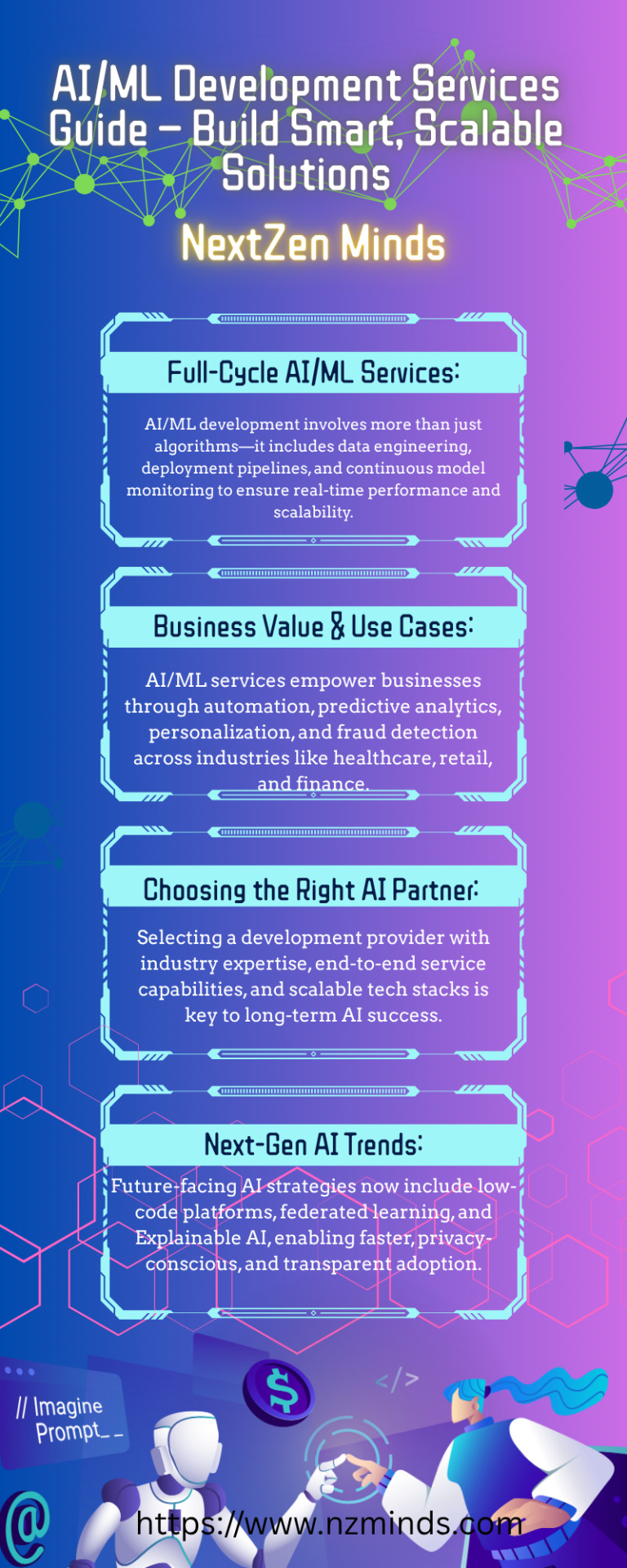
Discover everything about AI/ML development services – from data engineering to real-world applications. Learn how NextZen Minds helps US businesses drive innovation with tailored, intelligent solutions.
1 note
·
View note
Text
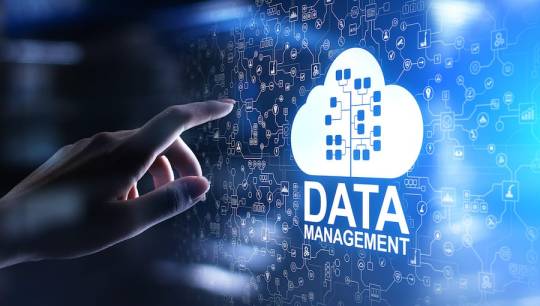
The Comprehensive Guide to Web Development, Data Management, and More
Introduction
Everything today is technology driven in this digital world. There's a lot happening behind the scenes when you use your favorite apps, go to websites, and do other things with all of those zeroes and ones — or binary data. In this blog, I will be explaining what all these terminologies really means and other basics of web development, data management etc. We will be discussing them in the simplest way so that this becomes easy to understand for beginners or people who are even remotely interested about technology. JOIN US
What is Web Development?
Web development refers to the work and process of developing a website or web application that can run in a web browser. From laying out individual web page designs before we ever start coding, to how the layout will be implemented through HTML/CSS. There are two major fields of web development — front-end and back-end.
Front-End Development
Front-end development, also known as client-side development, is the part of web development that deals with what users see and interact with on their screens. It involves using languages like HTML, CSS, and JavaScript to create the visual elements of a website, such as buttons, forms, and images. JOIN US
HTML (HyperText Markup Language):
HTML is the foundation of all website, it helps one to organize their content on web platform. It provides the default style to basic elements such as headings, paragraphs and links.
CSS (Cascading Style Sheets):
styles and formats HTML elements. It makes an attractive and user-friendly look of webpage as it controls the colors, fonts, layout.
JavaScript :
A language for adding interactivity to a website Users interact with items, like clicking a button to send in a form or viewing images within the slideshow. JOIN US
Back-End Development
The difference while front-end development is all about what the user sees, back end involves everything that happens behind. The back-end consists of a server, database and application logic that runs on the web.
Server:
A server is a computer that holds website files and provides them to the user browser when they request it. Server-Side: These are populated by back-end developers who build and maintain servers using languages like Python, PHP or Ruby.
Database:
The place where a website keeps its data, from user details to content and settings The database is maintained with services like MySQL, PostgreSQL, or MongoDB. JOIN US
Application Logic —
the code that links front-end and back-end It takes user input, gets data from the database and returns right informations to front-end area.
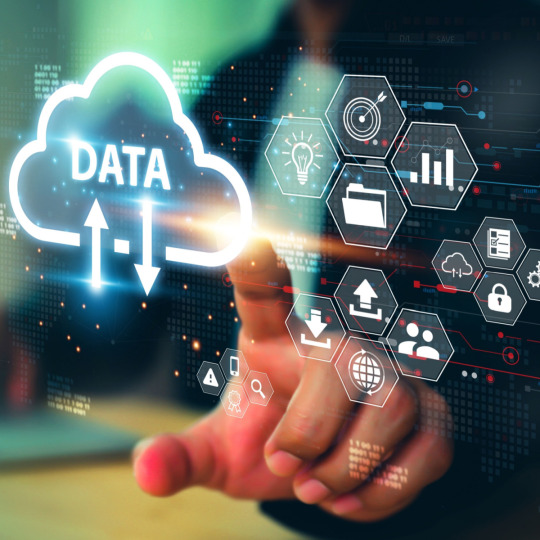
Why Proper Data Management is Absolutely Critical
Data management — Besides web development this is the most important a part of our Digital World. What Is Data Management? It includes practices, policies and procedures that are used to collect store secure data in controlled way.
Data Storage –
data after being collected needs to be stored securely such data can be stored in relational databases or cloud storage solutions. The most important aspect here is that the data should never be accessed by an unauthorized source or breached. JOIN US
Data processing:
Right from storing the data, with Big Data you further move on to process it in order to make sense out of hordes of raw information. This includes cleansing the data (removing errors or redundancies), finding patterns among it, and producing ideas that could be useful for decision-making.
Data Security:
Another important part of data management is the security of it. It refers to defending data against unauthorized access, breaches or other potential vulnerabilities. You can do this with some basic security methods, mostly encryption and access controls as well as regular auditing of your systems.
Other Critical Tech Landmarks
There are a lot of disciplines in the tech world that go beyond web development and data management. Here are a few of them:
Cloud Computing
Leading by example, AWS had established cloud computing as the on-demand delivery of IT resources and applications via web services/Internet over a decade considering all layers to make it easy from servers up to top most layer. This will enable organizations to consume technology resources in the form of pay-as-you-go model without having to purchase, own and feed that infrastructure. JOIN US
Cloud Computing Advantages:
Main advantages are cost savings, scalability, flexibility and disaster recovery. Resources can be scaled based on usage, which means companies only pay for what they are using and have the data backed up in case of an emergency.
Examples of Cloud Services:
Few popular cloud services are Amazon Web Services (AWS), Microsoft Azure, and Google Cloud. These provide a plethora of services that helps to Develop and Manage App, Store Data etc.
Cybersecurity
As the world continues to rely more heavily on digital technologies, cybersecurity has never been a bigger issue. Protecting computer systems, networks and data from cyber attacks is called Cyber security.
Phishing attacks, Malware, Ransomware and Data breaches:
This is common cybersecurity threats. These threats can bear substantial ramifications, from financial damages to reputation harm for any corporation.
Cybersecurity Best Practices:
In order to safeguard against cybersecurity threats, it is necessary to follow best-practices including using strong passwords and two-factor authorization, updating software as required, training employees on security risks.
Artificial Intelligence and Machine Learning
Artificial Intelligence (AI) and Machine Learning (ML) represent the fastest-growing fields of creating systems that learn from data, identifying patterns in them. These are applied to several use-cases like self driving cars, personalization in Netflix.
AI vs ML —
AI is the broader concept of machines being able to carry out tasks in a way we would consider “smart”. Machine learning is a type of Artificial Intelligence (AI) that provides computers with the ability to learn without being explicitly programmed. JOIN US
Applications of Artificial Intelligence and Machine Learning: some common applications include Image recognition, Speech to text, Natural language processing, Predictive analytics Robotics.
Web Development meets Data Management etc.
We need so many things like web development, data management and cloud computing plus cybersecurity etc.. but some of them are most important aspects i.e. AI/ML yet more fascinating is where these fields converge or play off each other.
Web Development and Data Management
Web Development and Data Management goes hand in hand. The large number of websites and web-based applications in the world generate enormous amounts of data — from user interactions, to transaction records. Being able to manage this data is key in providing a fantastic user experience and enabling you to make decisions based on the right kind of information.
E.g. E-commerce Website, products data need to be saved on server also customers data should save in a database loosely coupled with orders and payments. This data is necessary for customization of the shopping experience as well as inventory management and fraud prevention.
Cloud Computing and Web Development
The development of the web has been revolutionized by cloud computing which gives developers a way to allocate, deploy and scale applications more or less without service friction. Developers now can host applications and data in cloud services instead of investing for physical servers.
E.g. A start-up company can use cloud services to roll out the web application globally in order for all users worldwide could browse it without waiting due unavailability of geolocation prohibited access.
The Future of Cybersecurity and Data Management
Which makes Cybersecurity a very important part of the Data management. The more data collected and stored by an organization, the greater a target it becomes for cyber threats. It is important to secure this data using robust cybersecurity measures, so that sensitive information remains intact and customer trust does not weaken. JOIN US
Ex: A healthcare provider would have to protect patient data in order to be compliant with regulations such as HIPAA (Health Insurance Portability and Accountability Act) that is also responsible for ensuring a degree of confidentiality between a provider and their patients.
Conclusion
Well, in a nutshell web-developer or Data manager etc are some of the integral parts for digital world.
As a Business Owner, Tech Enthusiast or even if you are just planning to make your Career in tech — it is important that you understand these. With the progress of technology never slowing down, these intersections are perhaps only going to come together more strongly and develop into cornerstones that define how we live in a digital world tomorrow.
With the fundamental knowledge of web development, data management, automation and ML you will manage to catch up with digital movements. Whether you have a site to build, ideas data to manage or simply interested in what’s hot these days, skills and knowledge around the above will stand good for changing tech world. JOIN US
#Technology#Web Development#Front-End Development#Back-End Development#HTML#CSS#JavaScript#Data Management#Data Security#Cloud Computing#AWS (Amazon Web Services)#Cybersecurity#Artificial Intelligence (AI)#Machine Learning (ML)#Digital World#Tech Trends#IT Basics#Beginners Guide#Web Development Basics#Tech Enthusiast#Tech Career#america
6 notes
·
View notes
Text
Unlock the future of business with our Advanced Digital Services. We harness the power of AI/ML, Cloud Computing, Robotic Process Automation (RPA), and Data Visualization to transform your operations.
Our solutions are designed to drive efficiency, foster innovation, and provide actionable insights, empowering you to stay ahead in a rapidly evolving digital landscape.
Embrace technology that delivers unparalleled performance and scalable growth.
#machinelearning#datadriven#businessgrowth#datavisualization#roboticsprocess#ai/ml development services
1 note
·
View note
Text
Mindfire Solutions is a trusted name in delivering cutting-edge software solutions to global clients. Specializing in AI development services, the company empowers businesses to harness the power of artificial intelligence for smarter decision-making, automation, and innovation. With deep domain expertise and agile methodologies, Mindfire Solutions crafts tailored AI solutions that cater to unique business needs. Their team of experts focuses on delivering scalable and intelligent applications, making them a reliable technology partner in the rapidly evolving digital landscape.

#ai development services#artificial intelligence development services#ai implementation#ai/ml development services#ai and ml development services
0 notes
Text
Top AI & ML Services | App Development Services
Team of Keys is a trusted leader in app development, specializing in AI (Artificial Intelligence) and Machine Learning (ML) services in Italy, made for your business needs. Our advanced AI technology helps enhance patient care, optimize operations, and drive business growth in the rapidly evolving healthcare industry. Get a Free Consultation with Our Experts!
0 notes
Text
AI and Machine learning service provider
Aiinfox is a top provider of AI and machine learning services, providing unique solutions to enable organizations in many industries. To know more about AI and ML Services and any more AI Services, please visit our Website :
0 notes
Text
🤖“You can build the most sophisticated AI algorithm, but without robust data engineering, its formula 1 car 🏎️ on a dirt track”.

The rapid growth of AI and Machine learning isn’t just sophisticated algorithms; it relies on robust data engineering fundamentally. In the thriving digital economies of the United States and the United Arab Emirates, Artificial Intelligence (AI) and Machine Learning (ML) are no longer futuristic concepts. It should definitely need a strong backing. Whether it is for vast datasets or real-time pipelines, data engineering would be unsung heroes in terms of building innovation and the foundation of AI/Ml. Handling massive data volume requires a massive training to large language models and generative AI. As these complex AI demands high scalable and efficient data pipelines often leveraging cloud-native architectures.
As per the EU AI Act there is a need for reliable AI outcomes, data accuracy, consistency, security. Data engineers are crucial in implementing robust data governance frameworks. Effective AI/Ml requires more than algorithms as it demands ,
Unified data ingestion
Clean structured inputs
Automated pipelines
Cloud native storage
Governed access
The UAE is positioning itself as a global AI leader by making significant investments in AI infrastructure. AI/ML powered by strong data engineering has been integrated across sectors like government services, healthcare and finance which enhance efficiency and economic value.Meanwhile the UAE harnesses scalable pipelines fuel innovation in smart cities, public services and fintech. At Techmango we specialize in Data engineering for AI/ML with advanced tools such as AWS, Azure and GCP. If you’re rooting for your business to scale, partner with techmango to build the data backbone .
1 note
·
View note
Text
How AI Is Rewriting the Rules of Software Development in 2025
Artificial Intelligence is no longer just powering recommendations or chatbots — it's now embedded at the core of how we build, test, deploy, and scale software. From startup MVPs to full-scale enterprise platforms, AI is reshaping every stage of the product lifecycle.
Whether you're launching a fintech app or scaling a SaaS platform, integrating AI isn't optional anymore — it’s the competitive advantage.
Let’s explore how intelligent automation is changing the development game and how Zignuts helps you stay ahead with AI-Driven Software Development Services.
1. AI-Assisted Development Is Speeding Up Innovation
Tools like GitHub Copilot, TabNine, and internal LLMs are now assisting developers in writing boilerplate code, detecting bugs, and even suggesting architecture improvements.
Zignuts empowers teams with Full Stack Development Services combined with AI integrations to:
Automate repetitive logic
Enhance code reviews
Predict feature performance
Integrate AI-based testing systems
Want to build faster? Start lean with our MVP Development Services and test your product’s real potential in weeks.
2. Smarter Frontends, Powered by AI
Modern frontends are no longer just user interfaces — they’re adaptive environments.
Using behavioral data, machine learning models now adjust UI elements in real time. Our teams specialize in advanced frontend stacks like:
React JS Development
Vue JS Development
Next.js
Tailwind CSS
Want to scale fast? You can also Hire ReactJS Developers or Hire VueJS Developers on-demand.
3. Mobile Apps Meet On-Device AI
AI on the edge is now real. We're building apps with on-device intelligence for personalized, offline-first experiences — especially in health, edtech, and logistics sectors.
Whether it’s Android, iOS, or cross-platform, our teams deliver through:
Flutter Development Company
Mobile App Development Services
Android Development Company
iOS Development Company
Need to scale mobile delivery fast? Hire Android Developers or Hire Flutter Developers instantly.
4. AI-First Backends: Beyond APIs
Modern backends need to process massive data streams, respond in real-time, and learn over time. That's why we integrate LLMs, RAG frameworks, and intelligent caching in our:
Node JS Development Services
Python Development Services
Laravel Development
MongoDB and PostgreSQL integrations for scalable data
For smarter architecture, we also help you Hire Prompt Engineers, AI Developers, or ChatGPT Developers.
5. Global Collaboration, Intelligent Teams
Need to scale a team for a new project? Or augment your existing setup without long-term hiring?
We offer access to top global talent:
Hire DevOps Engineers
Hire Swift Developers
Hire Kotlin Developers
Hire Tailwind Developers
You can even schedule to Meet in Dubai, Germany, or USA to discuss your AI roadmap.
Final Word: AI Is No Longer a Feature — It’s the Foundation
In this new era, software that doesn’t evolve, dies. If your system isn’t learning, adapting, or predicting, it’s already lagging.
Now is the time to upgrade how you build, with Zignuts’ AI-Driven Software Development Services. Let’s create products that think, scale, and grow — like your business deserves.
0 notes
Text
💥 99% of AI Startups Will Be Dead by 2026 — Here’s Why
The global excitement around Artificial Intelligence (AI) and Machine Learning (ML) has exploded in recent years. From automating tasks to powering intelligent systems, AI is driving innovation across every industry. Yet, behind the hype, there’s a hard truth brewing — most AI startups won't survive the next 12–18 months.

In fact, by 2026, industry experts believe up to 99% of AI startups could fail. So, what’s really going wrong in this booming industry? And how can Indian companies offering AI and ML services avoid becoming part of that statistic?
Let’s explore the reasons — and the roadmap to success.
0 notes
Text
Data Annotation vs Data Labeling: What Really Matters for Scalable, Enterprise-Grade AI Systems?
What’s the real difference between data annotation and data labeling? For most AI professionals, the terms are often used interchangeably—but for enterprise-grade systems, these subtle distinctions can impact scalability, accuracy, and overall performance. This blog breaks it all down.
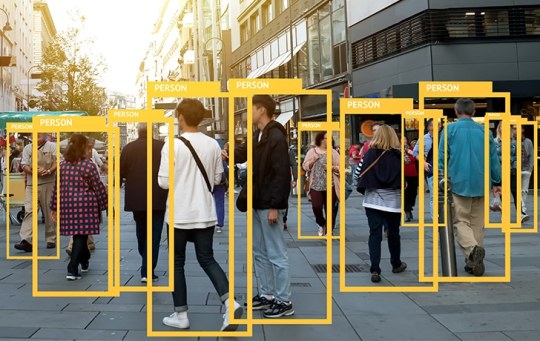
Data Annotation vs Data Labeling: Key Differences
The blog begins by comparing the two concepts based on:
Conceptual foundation: Annotation adds context; labeling tags data
Process complexity: Annotation often requires deeper interpretation
Technical implementation: Varies with tools, model types, and formats
Applications: Labeling suits classification tasks; annotation supports richer models (like NLP and computer vision)
Understanding the Key Difference: Medical Imaging Use Case
A real-world example in medical imaging helps clarify how annotation enables diagnostic AI by capturing detailed insights beyond simple tags.
When the Difference Matters—And When It Doesn’t
Matters: In high-stakes AI (e.g., healthcare, autonomous driving), where context is vital
Doesn’t matter: In simpler classification tasks where labeling alone is sufficient
Key Factors for Scalable, Enterprise AI
The blog emphasizes enterprise considerations:
Data quality and consistency
Scalability and automation
Domain expertise for high accuracy
Ethical handling and bias mitigation
ML-Readiness: The True Success Metric
Ultimately, successful AI systems depend on how well the data is prepared—not just labeled or annotated, but made machine-learning ready.
For enterprises scaling AI, understanding these nuances helps build smarter, more reliable systems. Read the full blog to explore practical strategies and expert insights.
Read More: https://www.damcogroup.com/blogs/data-annotation-vs-data-labeling
0 notes
Text

Discover how NextZen Minds empowers businesses to overcome AI/ML implementation challenges through expert staff augmentation and custom development services, driving rapid ROI and innovation.
1 note
·
View note
Text
AI Chatbot Development Company Offered by Chirpn for Intelligent Customer Engagement
Wondering how to enhance customer engagement and automate support using conversational AI? Chirpn, a leading AI chatbot development company, builds intelligent, NLP-powered chatbots that deliver seamless, real-time interactions across websites, apps, and social platforms. Our chatbots understand user intent, handle queries efficiently, and provide personalized responses—24/7. Whether you're in e-commerce, healthcare, finance, or any service industry, Chirpn customizes chatbot solutions that align with your brand voice and operational needs. With a focus on user experience and automation, our AI chatbots help you reduce costs, improve satisfaction, and boost business performance through smarter communication.

#ai software development companies#top machine learning companies#ai development companies#ai ml development company#machine learning companies#ai product development#crm implementation services#AI chatbot development company
0 notes
Text
Mindfire Solutions is a trusted technology partner known for delivering cutting-edge custom software solutions to global clients. With a strong focus on innovation and quality, the company excels in providing AI development services that empower businesses to automate processes, gain insights, and drive growth. Their expert team leverages advanced AI technologies to build scalable, intelligent systems tailored to unique business needs, ensuring efficiency, agility, and a competitive edge.
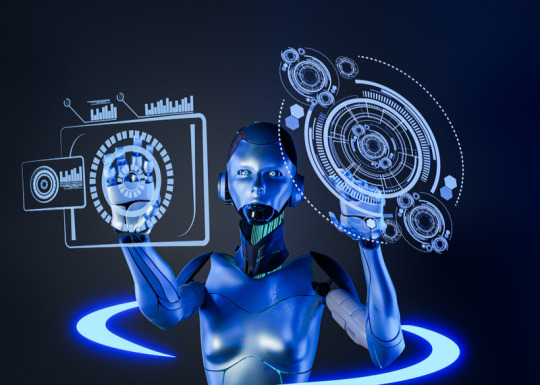
#ai development services#artificial intelligence development services#ai implementation#ai/ml development services#ai and ml development services
0 notes
Text
Top AI/ML development company—Team of Keys
Experience the Power of AI-Driven Transformation! Team of Keys offers consulting and development services to take advantage of technologies like Artificial Intelligence (AI) and Machine learning (ML) development Services. By reducing costs and improving workflow effectiveness and efficiency, we help you grow your business.
0 notes
Text
Pioneering the Future with AI and Machine Learning Expertise
Artificial Intelligence (AI) and Machine Learning (ML) are reshaping industries globally, offering new opportunities to optimize processes, enhance decision-making, and drive innovation. Businesses looking to stay ahead of the competition must embrace these transformative technologies, and one of the best ways to do so is through AI consulting services.
For more information visit here:- Pioneering the Future with AI and Machine Learning Expertise
0 notes